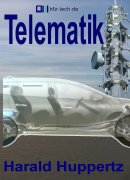The former CEO Ferdinand Piech must have been pretty good for inspiring his engineers, because in his time are many innovations, almost too many, such as a whole range of noble vehicles that remain for the average customers probably forever unattainable. But there is also a car, finished just before the end of his tenure and scarcely less includes many ideas and patents. He finally drives with it - accompanied secure - with an average speed of 71.5 km/h from Berlin to Hamburg and consumes 0.89 liters per 100 km. Should, however, someone believe the mass production would be imminent, he/she must be unfortunately disappointed, but again this is a super car and unaffordable for the average consumer. This is due to already the carbon fiber body.
One can hardly believe, but that's a fairly grown-up car with all safety precautions. Even a heating and a small luggage space are available. However, one must, as in the picture visible, climb it quasi from the top by fold away an almost completely transparent plastic roof. After all, there are keyless entry and a host of other amenities, e.g. a camera for reversing. Co-driver (inside) basically sit behind the driver's seat, now what reminds definitely at the Messerschmidt-Kabinenroller (cabin scooter).
Also a weight of less than 300 kg, but with so much modern technology, only with much effort to achieve. These include chassis, seat frames and steering wheel made of magnesium and a cover of carbon fiber, the material that us will still save many liters of fuel in the future. Who suspects now that this is all to the detriment of safety is rather wrong, still have the single seats more distance to side wall than in most compact cars. And with the many reinforcements and crumple zone front, the car can also score well in a frontal collision.
One would now suspected in the engine a charge but it is a suction diesel with even surprisingly little compression. The priorities of change are somewhere else, namely, in addition to weight reduction mainly in the reduction of internal friction. The with two camshafts and three valves quite complicated engine control will be smoother by roll instead of sliding friction at the rocker arms. A laser-machined cylinder track produces for the oil accurately calculated deepenings, without by too rough surface hindering the piston in its course. Unbelievable that something like that weighs without coolant and oil only 26 kg.
Just very difficult to understand is the indicated top speed of 120 km/h with only 6.3 kW (8.5 hp) performance. This is the other side of the weight saving, but much more of the favorable aerodynamics. Thereby the insane cW-value is only partially involved. That is multiplied with the cross-sectional area to calculate the air resistance. Usually you can determine this by multiplying the height with the track. But not in this case because the 1L car of VW is above quite narrow. Even the very narrow tires will help with very different air pressure.
| | |||||||||||||||||||||||||||||||||||||||||||||||||||||||||||||||||||||||||||||||


 One-liter-vehicle
One-liter-vehicle